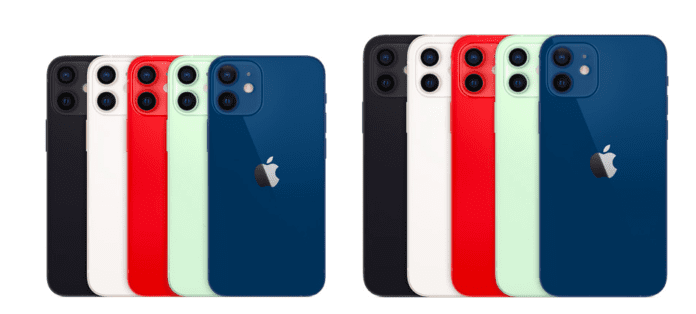The unveiling of the hotly anticipated iPhone 12 device series “essentially [marks] the launch of the Consumer 5G era,” according to a research note from Cowen analysts. The first 5G-capable iPhone, which supports a broad range of spectrum bands including millimeter wave, could be a tipping point for the consumer adoption of 5G services and it is widely anticipated to inject new life into the smartphone market, which has languished in recent years as devices have become more expensive and end users have hung onto them longer between upgrades.
The iPhone 12 is launching at a lower price point than Samsung’s Galaxy flagship phones, with the base model iPhone 12 starting at $799 compared to the base model Galaxy S20’s $999. (For more comparable 5G support on the Galaxy side, the iPhone 12 Pro Max retails starting at $1099 and the Samsung Galaxy S20 Ultra comes in at $1399.99 — meaning that there are still substantial upgrade costs associated with the devices.
However, the major U.S. carriers are also going out of their way to attract iPhone upgraders (and get them onto unlimited plans) with $0-down device offers of varying degrees. AT&T is playing particularly aggressively and extending the shiny new-line offers that carriers typically use to woo churners, to its existing customer base.
“Carriers are looking to dislodge the stagnation, jockeying for position to win the 5G marketing narrative, and take advantage of the elevated switcher pool with compelling iPhone 12 promotions,” Cowen’s analysts wrote, adding that the initial iPhone promos are “round one” in a fight among the carriers for what could be a particularly hot upgrade market in the fourth quarter (rounds two and three will be Black Friday and the holiday sales season).
Cowen conducted a quick consumer survey asking about people’s upgrade plans and found that 20% of postpaid respondents expected to upgrade for 5G specifically, another 14% anticipate upgrading for other reasons, and 66% do not plan on upgrading their device. “Our survey is suggesting 4Q20 may be an exceptional volume quarter,” the firm noted.
But to what extent will that volume be impacted by the ongoing economic fallout from the coronavirus pandemic? A different survey by WalletHub, specifically focused on the iPhone and cellular spending, noted that “this year many people may not have as much money to spend due to the COVID-19 pandemic. The unemployment rate is 8.4% and total credit card debt stands at nearly $1 trillion, which means that buying a new iPhone is an even bigger decision for consumers than usual.”
WalletHub’s survey found that about 36% of Americans “plan to reduce the cost of their cell phone due to the COVID-19 pandemic.” However, another one in three people said that they plan to get the new iPhone this year. The survey also confirmed previous surveys which found that many Americans believe that their phone is their most important/valuable belonging during the pandemic, so they may very well be willing to put money into cellular and cut back in other ways — or go into debt — to do so. About 73% more people think that the new iPhone is “worth going into debt for” compared to the number who thought so last year, WalletHub found. But even with that figure, 62% indicated that they bought their last phone outright and 38% financed the purchase; most people planned to stick with the same option the next time they get a new phone, WalletHub’s survey found.
In addition, multiple consumer surveys have found that there is consumer confusion over whether their devices can actually access 5G networks or not — and why would you upgrade to something that you think you already have? Global Wireless Solutions found recently that across all U.S. carriers, nearly half of iPhone users believe that their existing phones already have 5G capabilities, even though the only 5G-capable iPhone won’t go on sale until later this month. A similar survey from MVNO Ting Mobile in March found that 19% of iPhone users believed that their device supported 5G, and another 28% of people who had purchased their phones two or more years ago (before the advent of 5G-capable devices) also believed that their phones could access 5G networks.

